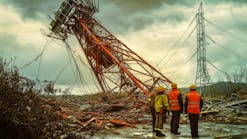ET Flashback: Enchanted Rock delivering RNG-fueled Microgrid for Microsoft Data Center in California
(Editor's Note: this story originally posted in EnergyTech.com in June. We are reposting to let our readers know that Enchanted Rock and the Electric Power Research Institute will headline a free webinar Jan. 11 on renewable natural gas and energy resiliency. Register here.)
Microsoft is contracting microgrid firm Enchanted Rock to provide data center gen-sets fueled by renewable natural gas.
The system will be backup power for Microsoft’s San Jose, California, data center. The companies said it will be the largest microgrid in the state and will reduce emissions 96 percent compared to alternatives such as diesel.
“Today’s digital world relies on the uptime and continuity of data center operations,” said Thomas McAndrew, CEO of Houston-based Enchanted Rock. “This continuity does not need to come at the expense of companies’ carbon emission reduction goals or local air quality. Microsoft’s decision to pursue a renewable microgrid marks another milestone in the industry as businesses continue to move away from conventional, less carbon-friendly methods, and we expect this project will demonstrate that large-scale, reliable, and cost-effective back-up generation with net-zero carbon can become the new standard.”
Microsoft has vowed to become carbon negative by 2030.
“This project helps Microsoft take a step towards our goal of eliminating dependence on petroleum-based diesel, while increasing the resilience of our data center and providing a much-needed capacity resource to the local grid,” said Brian Janous, Microsoft’s general manager for DC Energy and Sustainability.
See our full coverage of Microgrid projects worldwide
Subscribe to EnergyTech's free newsletter for regular insights into the C&I Energy Transition
Power for the microgrid will be supplied by net-zero carbon RNG, injected upstream into the gas pipeline to offset the use of fossil gas. Enchanted Rock will source RNG captured from facilities that emit methane such as food waste and agricultural operations, making it part of the circular economy with neutral or negative carbon intensity.
California has close to 240 data centers spread across the state. Overall, data centers globally consume close to 200 terawatt hours of energy per year, or 200 million MWh.
Enhancing Resiliency for the Energy Transition
White Paper highlight Critical Role for Microgrids as long-duration Backup Power





